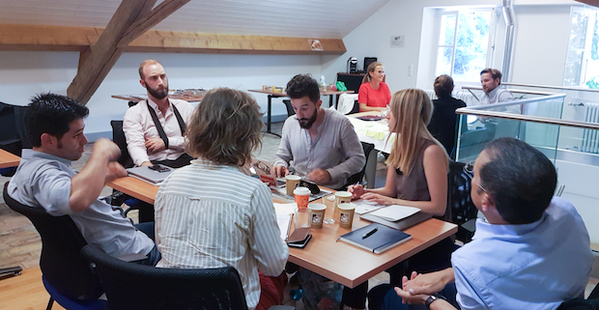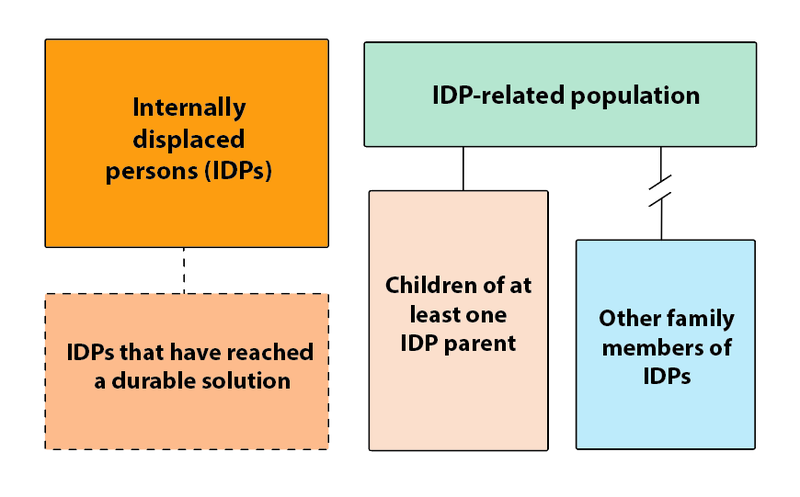With new countries (Georgia, Afghanistan and Honduras) and international organisations (IOM’s Displacement Tracking Matrix, DTM) and OCHA) joining the IDP subgroup of the international Expert Group on Refugee and IDP Statistics (EGRIS), the work is moving ahead at full speed in 2018.
Tasked with developing International Recommendations on IDP Statistics (IRIS), to be submitted to the UN Statistical Commission’s (UNSC) 51st session in 2020, the IDP subgroup of the EGRIS, led by JIPS, is in full swing. Last week, together with some group members from Colombia, the Kurdistan Region of Iraq, UNHCR, IDMC, IOM and Statistics Norway, we gathered together in Geneva to advance work on the Recommendations. As well as outlining the road ahead, the discussions particularly focused on a few of the more complicated issues:
Taking as its starting point content of the Technical Report on the Statistics of IDPs, endorsed by the UNSC in 2018, the working meeting made good process.

Far from being a mere technicality, refining the definition of IDP and IDP-related populations has a direct impact on our work and ability to provide specific and adequate statistical recommendations for each group of concern. Specifically, last week’s conversation focused on three relevant population categories asking whether and to what extent they should be considered as IDPs:
Building from analysis of relevant legal frameworks – the Guiding Principles on Internal Displacement and the 1951 Refugee Convention – the group shaped potential solutions for each population group as to how they should be accounted for in IDP statistics. Considerations included feasibility and policy relevance as well as ensuring adequately clear definitions.

Statistical categories to be included in official IDP statistics.
It is generally accepted that a person should stop being considered an IDP when:
Whilst the first two are relatively straightforward, establishing a statistical measurement for durable solutions, that is both relevant and possible to realize in different contexts, is a much more difficult issue. For this reason, the working meeting focused on the task of how to accurately and practically measure the achievement of a durable solution.
Existing international frameworks (IASC Framework for Durable Solutions for IDPs) and guidance (Durable Solutions Indicator Library and Analysis Guide), as well as consideration of different statistical methods and processes, were examined in order to identify an approach that could be effectively applied within the EGRIS framework. Approaches under development by various actors were also considered (such as that outlined by IDMC’s recent GRID 2018) proposing approaches to measure “interim” or “provisional” solutions in the absence of a more comprehensive approach.
The third issue tackled during the face-to-face meeting was that of the coordination of IDP statistics – a somewhat overlooked but critical topic.
Interesting points discussed included the role of National Statistics Systems and the challenges of working with them in contexts with weak institutional capacity; the need to get IDP statistics on to the official agenda and create demand or political momentum for this to happen; and the importance of coordination in periods of transition from humanitarian emergency contexts. Proposed recommendations on the publication and dissemination of IDP statistics were also outlined.
Moreover, discussions on what concrete recommendations can be made for stock and flow statistics, and on how to develop metrics to identify the different types of inflows and outflows (displacement, death, cross-border movement) were held. However, as with most of the issues outlined here, the conversation is still ongoing and more work needs to be done.
The subgroup plans to finalise the IRIS in early 2019. Based on the outcome of this meeting, the draft recommendations are under development and will be finalised through a workshop with all IDP subgroup members that JIPS will organise, facilitated by the World Bank, before the end of the year. We are also looking forward to showcasing further progress at the upcoming World Data Forum in October.